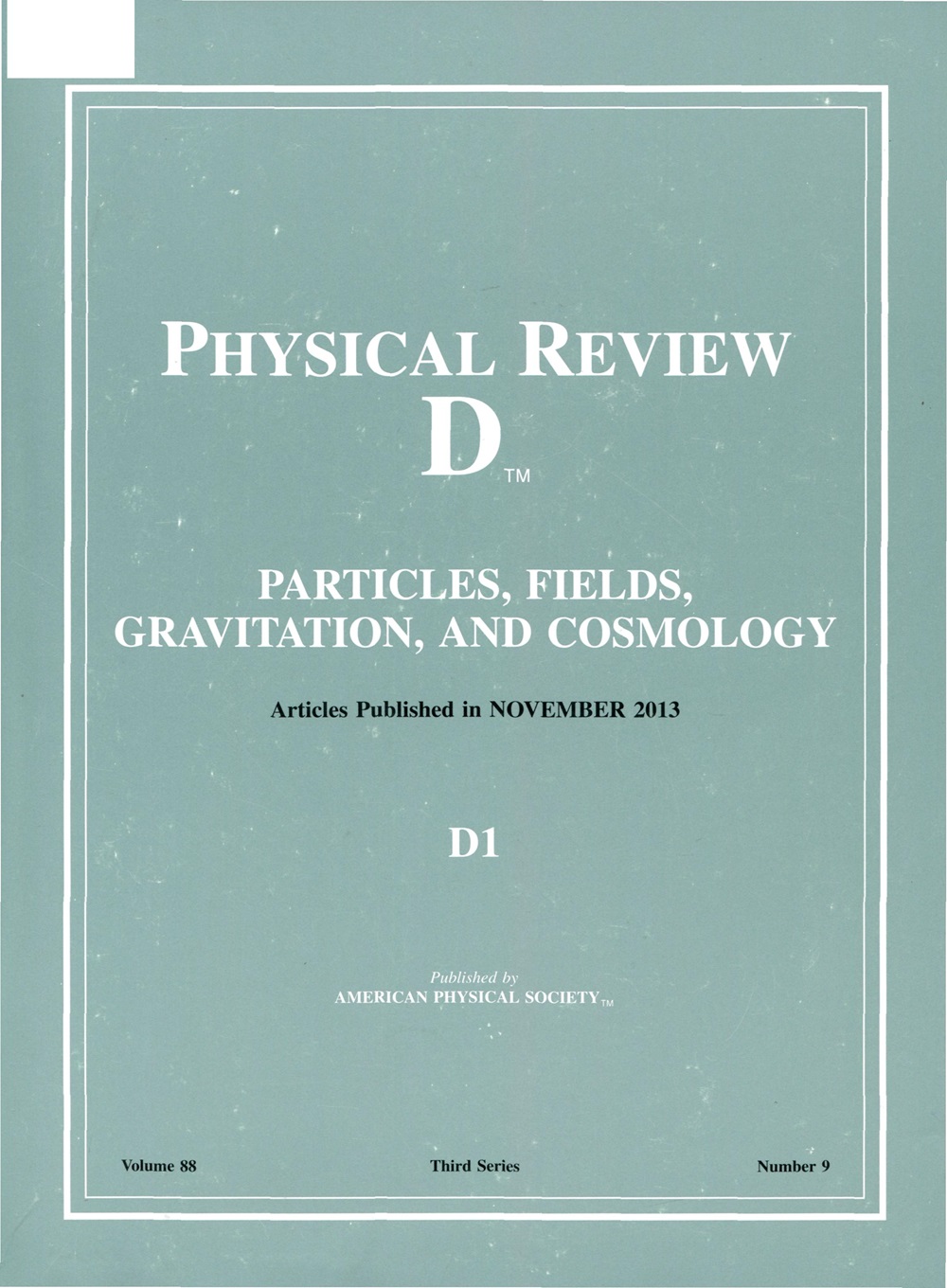吸气进动偏心紧致双星的改进后牛顿波形模型
IF 5
2区 物理与天体物理
Q1 Physics and Astronomy
引用次数: 0
摘要
引力波(GW)信号中的自旋进动和轨道偏心的测量是引力波天文学的一个关键优先级,因为这些效应不仅为致密双星的天体物理形成和演化提供了独特的见解,而且如果在波形模型中被忽略,可能会在参数估计、搜索和广义相对论测试中引入重大偏差。尽管即将到来的LIGO-Virgo-KAGRA观测运行和未来的探测器测量偏心处理信号的潜力越来越大,但准确有效地模拟它们仍然是一个重大挑战。在这项工作中,我们提出了py,一个频域后牛顿(PN)波形模型,用于进动偏心紧致双星的激励。py改进了以前的模型,引入了傅里叶模态振幅的解析表达式,增强了多尺度分析框架的数值稳定性,并添加了最近导出的PN校正,这对于准确描述GW探测器中的信号至关重要。此外,我们简化了数值实现,并引入了一种方案来插值极化幅度,在波形计算中实现了高达O(15)的加速,使模型适用于数据分析应用。我们通过将其与准圆形和偏心自旋对准极限下的其他波形模型进行比较,彻底验证了py,发现了很好的一致性。此外,我们证明了py分析模拟GW事件的能力,准确地恢复了py和henom描述的信号参数。虽然py仍然缺乏重要的物理效应,如高阶PN校正、高阶模态、模态不对称、潮汐相互作用或合并环垮阶段,但它代表了迈向更完整波形模型的重要一步,提供了一个灵活有效的框架,可以在未来的工作中扩展以纳入这些效应。2025年由美国物理学会出版本文章由计算机程序翻译,如有差异,请以英文原文为准。
Improved post-Newtonian waveform model for inspiralling precessing-eccentric compact binaries
The measurement of spin precession and orbital eccentricity in gravitational-wave (GW) signals is a key priority in GW astronomy, as these effects not only provide unique insights into the astrophysical formation and evolution of compact binaries, but also, if neglected in waveform models, could introduce significant biases in parameter estimation, searches, and tests of general relativity. Despite the growing potential of upcoming LIGO-Virgo-KAGRA observing runs and future detectors to measure eccentric-precessing signals, accurately and efficiently modeling them remains a significant challenge. In this work, we present py, a frequency-domain post-Newtonian (PN) waveform model for the inspiral of precessing-eccentric compact binaries. py improves upon previous models by introducing analytical expressions for the Fourier mode amplitudes, enhancing the numerical stability of the multiple scale analysis framework, and adding recently derived PN corrections, critical to accurately describe signals in GW detectors. Additionally, we simplify the numerical implementation and introduce a scheme to interpolate the polarization amplitudes, achieving a speedup of up to ∼O(15) in the waveform computations, making the model practical for data analysis applications. We thoroughly validate py by comparing it to other waveform models in the quasicircular and eccentric-spin-aligned limits, finding good agreement. Additionally, we demonstrate py ’s capability to analyze simulated GW events, accurately recovering the parameters of signals described by both py and henom. While py still lacks important physical effects, such as higher-order PN corrections, higher-order modes, mode asymmetries, tidal interactions, or the merger-ringdown phase, it represents a significant step toward more complete waveform models, offering a flexible and efficient framework that can be extended in future work to incorporate these effects. Published by the American Physical Society 2025
求助全文
通过发布文献求助,成功后即可免费获取论文全文。
去求助
来源期刊

Physical Review D
物理-天文与天体物理
CiteScore
9.20
自引率
36.00%
发文量
0
审稿时长
2 months
期刊介绍:
Physical Review D (PRD) is a leading journal in elementary particle physics, field theory, gravitation, and cosmology and is one of the top-cited journals in high-energy physics.
PRD covers experimental and theoretical results in all aspects of particle physics, field theory, gravitation and cosmology, including:
Particle physics experiments,
Electroweak interactions,
Strong interactions,
Lattice field theories, lattice QCD,
Beyond the standard model physics,
Phenomenological aspects of field theory, general methods,
Gravity, cosmology, cosmic rays,
Astrophysics and astroparticle physics,
General relativity,
Formal aspects of field theory, field theory in curved space,
String theory, quantum gravity, gauge/gravity duality.
 求助内容:
求助内容: 应助结果提醒方式:
应助结果提醒方式:


